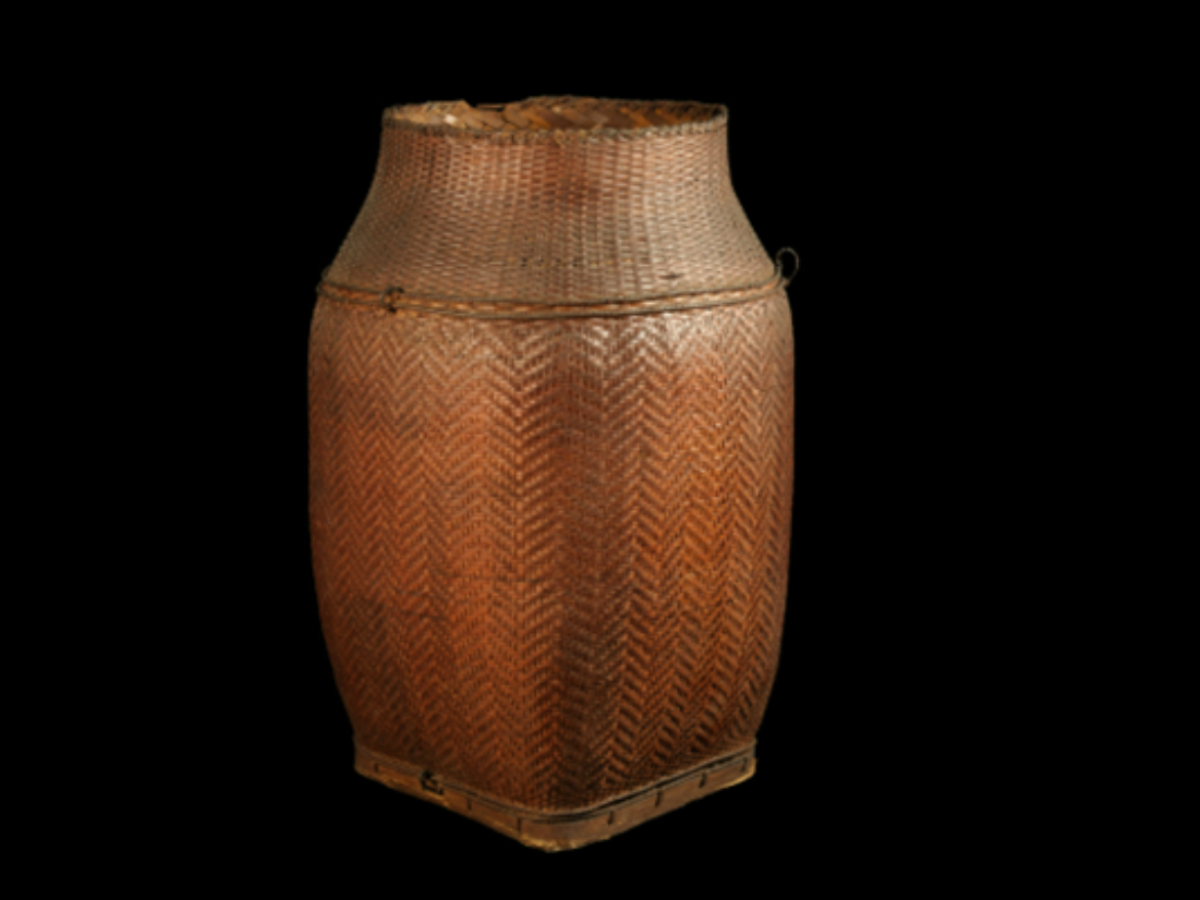State
Tribe Name
Art Type
short description
The bamboo basket of the Mishmi tribe is yet another classic incarnation of precision, durability, and traditional ingenuity. This basket, long and cylindrical, is a racy departure from the usual round forms. It has a unique combination of square and circular elements, with a square base and square stand made from flat bamboo splits offering stability on uneven ground — useful in the hilly regions inhabited by the Mishmi people.
The body of the basket has been woven very tightly and firmly, displaying great workmanship by the tribesmen. Such close weaving adds to the strength and durability of the basket itself and enables the carrying of heavy objects like firewood, agricultural produce, or household items. Another interesting feature is that though the body is cylindrical, the mouth is circular with a narrow opening. This shape keeps the load secure while transferring, especially when carried on the back via straps.
Mishmi bamboo baskets do not just serve as functional objects; they have embedded identity, environmental balance, and art for generations in the life of the Mishmi. Bamboo, which heavily grows and thrives in the environment around here, is their example of the closeness living with Mother Nature. Basket weaving is typically done using bare hands with the age-old method that is carried on from one generation to the other-she maintains the Mishmi legacy.
Such baskets remain a part-and-parcel of day-to-day life of Mishmi communities, harmonizing utility with tradition and environmentally sound design.
The body of the basket has been woven very tightly and firmly, displaying great workmanship by the tribesmen. Such close weaving adds to the strength and durability of the basket itself and enables the carrying of heavy objects like firewood, agricultural produce, or household items. Another interesting feature is that though the body is cylindrical, the mouth is circular with a narrow opening. This shape keeps the load secure while transferring, especially when carried on the back via straps.
Mishmi bamboo baskets do not just serve as functional objects; they have embedded identity, environmental balance, and art for generations in the life of the Mishmi. Bamboo, which heavily grows and thrives in the environment around here, is their example of the closeness living with Mother Nature. Basket weaving is typically done using bare hands with the age-old method that is carried on from one generation to the other-she maintains the Mishmi legacy.
Such baskets remain a part-and-parcel of day-to-day life of Mishmi communities, harmonizing utility with tradition and environmentally sound design.
Thumbnail

Filter Postion
Left
Filter Background
Off
Theme
Filter Header Image

content
Image

description
The bamboo basket of the Mishmi tribe is yet another classic incarnation of precision, durability, and traditional ingenuity. This basket, long and cylindrical, is a racy departure from the usual round forms. It has a unique combination of square and circular elements, with a square base and square stand made from flat bamboo splits offering stability on uneven ground — useful in the hilly regions inhabited by the Mishmi people.
The body of the basket has been woven very tightly and firmly, displaying great workmanship by the tribesmen. Such close weaving adds to the strength and durability of the basket itself and enables the carrying of heavy objects like firewood, agricultural produce, or household items. Another interesting feature is that though the body is cylindrical, the mouth is circular with a narrow opening. This shape keeps the load secure while transferring, especially when carried on the back via straps.
Mishmi bamboo baskets do not just serve as functional objects; they have embedded identity, environmental balance, and art for generations in the life of the Mishmi. Bamboo, which heavily grows and thrives in the environment around here, is their example of the closeness living with Mother Nature. Basket weaving is typically done using bare hands with the age-old method that is carried on from one generation to the other-she maintains the Mishmi legacy.
Such baskets remain a part-and-parcel of day-to-day life of Mishmi communities, harmonizing utility with tradition and environmentally sound design.
The body of the basket has been woven very tightly and firmly, displaying great workmanship by the tribesmen. Such close weaving adds to the strength and durability of the basket itself and enables the carrying of heavy objects like firewood, agricultural produce, or household items. Another interesting feature is that though the body is cylindrical, the mouth is circular with a narrow opening. This shape keeps the load secure while transferring, especially when carried on the back via straps.
Mishmi bamboo baskets do not just serve as functional objects; they have embedded identity, environmental balance, and art for generations in the life of the Mishmi. Bamboo, which heavily grows and thrives in the environment around here, is their example of the closeness living with Mother Nature. Basket weaving is typically done using bare hands with the age-old method that is carried on from one generation to the other-she maintains the Mishmi legacy.
Such baskets remain a part-and-parcel of day-to-day life of Mishmi communities, harmonizing utility with tradition and environmentally sound design.
Image Mode
portrait
promoted
Off
Verified
Off
